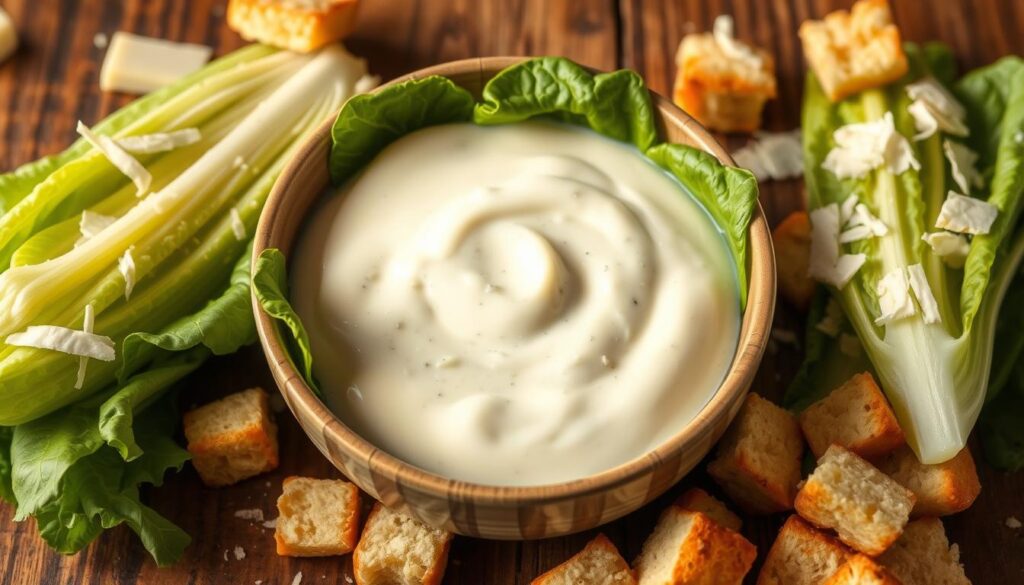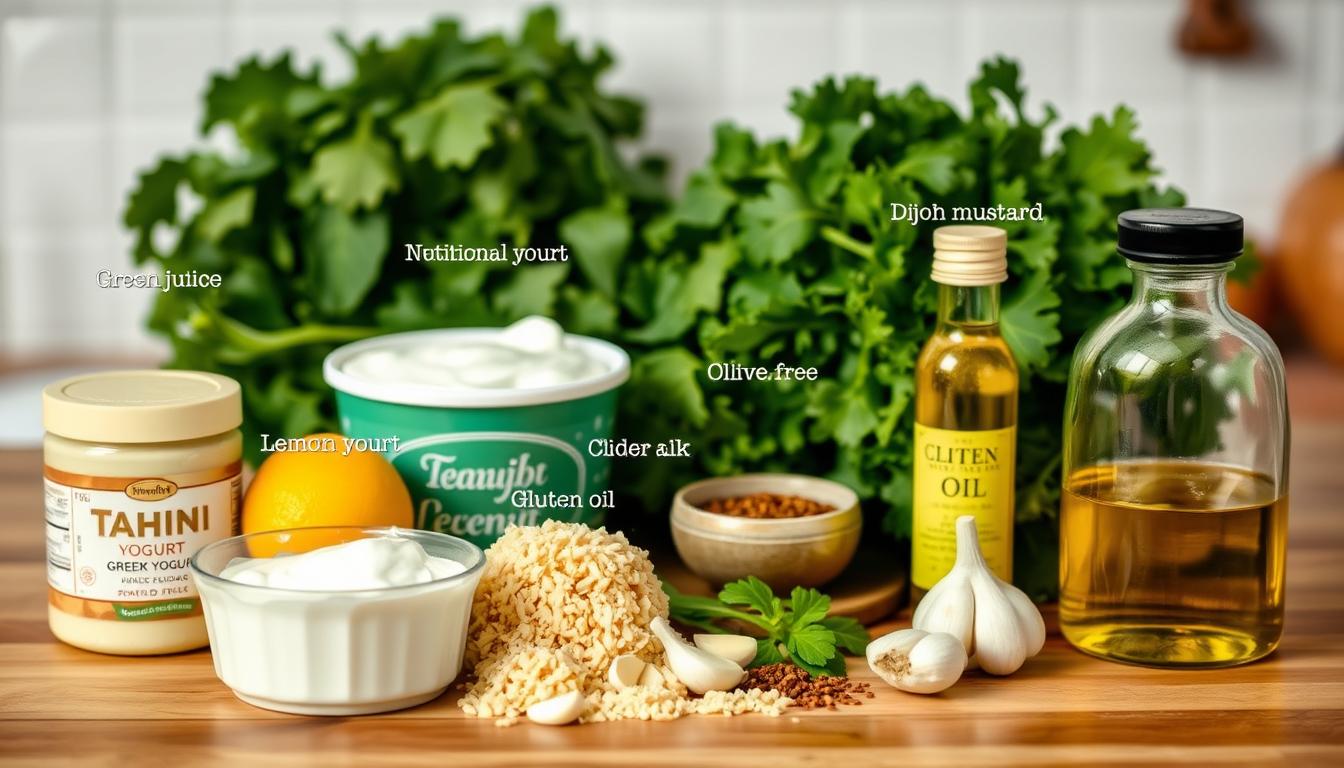Caesar salad is a favorite among many, but it raises questions for those on a gluten-free diet. Is traditional Caesar dressing gluten-free, or does it contain hidden gluten? This guide will delve into the facts about Caesar dressing and its gluten content. We aim to help you enjoy this tasty salad safely.

Key Takeaways
- Caesar dressing usually has ingredients like oil, eggs, and Parmesan cheese that are naturally gluten-free.
- But, some store-bought Caesar dressings might have gluten in thickeners or stabilizers.
- Making your own Caesar dressing is often the best choice for a gluten-free diet, as you can pick the ingredients.
- Some well-known Caesar dressing brands offer gluten-free versions. Always check the labels to make sure they fit your dietary needs.
- Ordering Caesar salad at restaurants can be challenging, but there are ways to do it safely while sticking to a gluten-free diet.
Understanding Caesar Dressing: Traditional Ingredients and Components
Caesar dressing is a classic favorite, loved for its creamy texture and bold flavors. Let’s dive into the key ingredients and the history that made it what it is today.
Key Ingredients in Classic Caesar Dressing
The heart of Caesar dressing is a mix of essential parts:
- Egg yolks, which give it a creamy base
- Garlic, adding a strong aroma and taste
- Parmesan cheese, bringing a salty, rich flavor
- Lemon juice or vinegar, adding a tangy kick
- Anchovy paste or Worcestershire sauce, adding depth
- Olive oil, blending everything for a smooth texture
Historical Background of Caesar Dressing
Caesar dressing’s story starts in the early 1900s. It was made by Italian-American chef Caesar Cardini in Tijuana, Mexico. Cardini created it to impress American tourists on the Fourth of July. He used what he had, and the Caesar salad was born.
This salad quickly became a hit in the U.S. It’s now a favorite on menus everywhere.
Common Variations in Modern Recipes
Today, Caesar dressing has many new twists. Some recipes add mayonnaise for creaminess, Dijon mustard for tanginess, or Greek yogurt for healthiness. These changes show how Caesar dressing can adapt to new tastes and trends.
| Traditional Ingredients | Modern Variations |
|---|---|
| Egg yolks, garlic, Parmesan, lemon juice, anchovy paste | Mayonnaise, Dijon mustard, Greek yogurt |
Is Caesar Dressing Gluten Free? The Truth Revealed
Many people who follow a gluten-free diet wonder about Caesar dressing. The truth is, it depends on the ingredients. Traditional Caesar dressing has anchovies, eggs, and Parmesan cheese, which are naturally gluten-free. But, some versions or commercial products might include gluten.
Bread crumbs or croutons can be added to Caesar dressing. These can introduce gluten. Some makers might also use wheat-based thickeners or stabilizers for texture. This makes the dressing not safe for those on a gluten-free diet.
- The classic Caesar dressing, made with its core ingredients, is typically gluten-free.
- Variations that incorporate bread crumbs, croutons, or wheat-based additives may contain gluten.
- It’s essential to carefully read the labels of store-bought Caesar dressings to ensure they are free from gluten-containing components.
To ensure a gluten-free Caesar dressing, making your own or choosing certified gluten-free products is best. Being aware of ingredients and potential gluten sources helps. This way, you can enjoy Caesar dressing while staying gluten-free.
“The key to a successful gluten-free Caesar dressing is to focus on the core, naturally gluten-free ingredients and avoid any unnecessary additions that may introduce gluten.”
